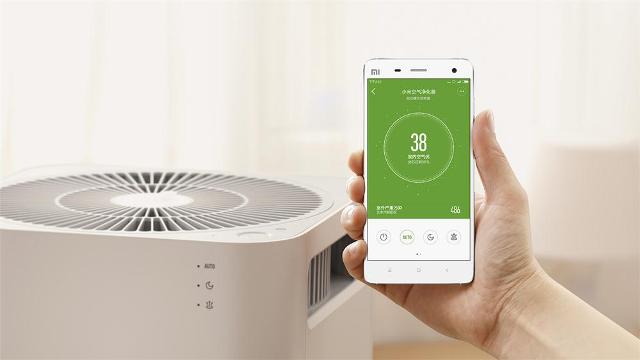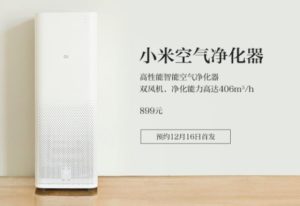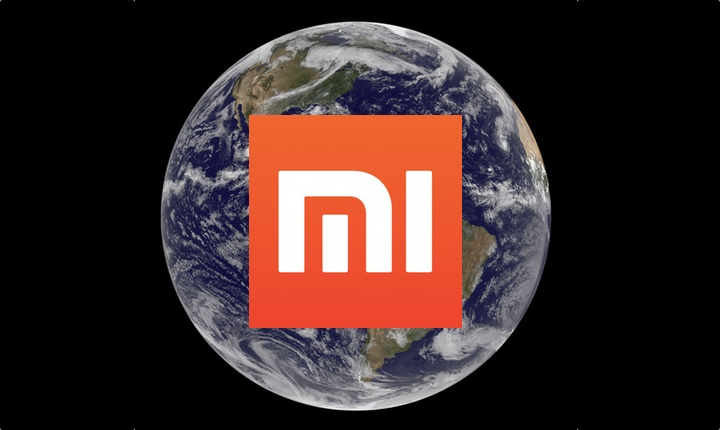To know more about China’s market, contact at dx@daxueconsulting.com
Under serious competition from other brands, like Samsung, Sharp, TCL, and Honeywell; Xiaomi pioneers in air purifier by providing high-quality products at lower prices. What are the reasons beyond its success for its air purifier sales in China? What is the company’s strategy?
Market Overview: Xiaomi’s Air Purifier
 The air pollution requires people’s attention. In about 3000 monitoring stations in 103 countries and regions of the world, it is estimated that the amount of PM (Particulate matter, also known as particle pollution), a complex mixture of small particles, are between PM2.5 and PM10, exceeding the criteria released by the World Health Organization. Air pollution kills more than 2 million people each year, according to a study published in the journal Environmental Research Letters. The effects of air pollution on human health can vary widely depending on the pollutant. More than 80% of people living in urban areas are exposed to the air quality levels that exceeds the World Health Organization (WHO) limits. While all regions of the world are affected, populations of cities with low-income are the most impacted.
The air pollution requires people’s attention. In about 3000 monitoring stations in 103 countries and regions of the world, it is estimated that the amount of PM (Particulate matter, also known as particle pollution), a complex mixture of small particles, are between PM2.5 and PM10, exceeding the criteria released by the World Health Organization. Air pollution kills more than 2 million people each year, according to a study published in the journal Environmental Research Letters. The effects of air pollution on human health can vary widely depending on the pollutant. More than 80% of people living in urban areas are exposed to the air quality levels that exceeds the World Health Organization (WHO) limits. While all regions of the world are affected, populations of cities with low-income are the most impacted.
According to the latest urban air quality database, 98% of cities in low- and middle-income countries with more than 100 000 inhabitants do not meet the World Health Organization air quality guidelines. However, in high-income countries, that percentage decreases to 56%.
The WHO also estimated that air pollution throughout the world has increased by 8% from 2008 to 2013. Things are getting worse in China. According to data provided by Beijing government in 2010, Beijing ranked as seventy-seventh among the cities with the worst air quality. PM 2.5 and PM10 are just two main factors for the air pollution. Other sources include formaldehyde that could be released from decoration materials and low-quality clothes. The air quality is at everyone’s attention since it is directly related to people’s health and living standards.
Therefore, air purifier market in China has great potential. It is expanding in developed countries, an air purifier is prevalent. The rate in China of air purifier’s owner is below 0.1%. However, the market is expanding with prosperity. The number of air purifier sold in 2010 was only at 0.2 million, but it has surged to 2 million in 2014. The main reason is that people in China have started to pay special attention to the air pollution released from decoration materials, such as paint or furniture, which may lead to demand air purifier in China. The chief manager from TCL also predicted that production value of environment protection industry could reach to 80 billion RMB in 2016. The major market players include European and American brands like Philips, Blueair and Honeywell, Japanese and Korean brands like Samsung, Sharp, and Panasonic, and also the domestic brands like Xiaomi, TCL and Gree. It requires more characteristics and features for companies to stand out in these competitors.
The new situation requires new challenges for the companies. Although air pollution was rather severe last year in China, the government has engaged in controlling it. Therefore, the producers should develop new features for products rather than stick to smog as a publicity stunt. Besides, customers’ consumption tends to be more rational. The original phenomena of consuming the air purifiers out of fear will decline gradually. The knowledge about air pollution will be strengthened and irrational behavior will disappear. Thus, the producers are required to form and lead a correct consumption concept by spreading purifying knowledge and producing air purifiers with more attractive function.
Xiaomi’s Secrets For Success
The technological advantages possessed by Xiaomi are outstanding. Xiaomi purifier’s capacity of purifying the air is appealing, which can decrease pollution concentration from 500 ug/m³ to 35 ug/ m³ in about 18 minutes, dwarfing even other once dominating brands, such as Sharp. Furnished with two fans, Xiaomi purifier is able to increase the air velocity with HEPA filter screen. Besides, the HEPA filter screen can filter the particles as tiny as PM0.3, far below the standard of PM2.5, which is also one characteristic. Last but not least, Xiaomi purifier can realize the remote control. Imagine that everyone can control their air purifier through mobile phone on the subway and enjoy the purified air when he gets home. Although Xiaomi is to blame for its similar appearance with Balmuda, Xiaomi’s combination of high quality and low price still has attracted people’s attention.
 Xiaomi’s marketing strategy provides its purifier with powerful support. As a newcomer of air purifier, Xiaomi acknowledges that only novelty and high quality will attract people’s attention. The first strategy is low price, which has been applied by Xiaomi for former products such as router and smartphone. The price of its air purifier equals only one-sixth of other equivalents. Moreover, the quality can also be guaranteed. The second strategy is its core team. Out of people’s expectation, Xiaomi invites a new group for the research and development of the product, including R&D director from other companies, such as Balmuda and Motorola. Finally, Xiaomi targets its customer as young people, which is an emerging group with a high capability for consuming.
Xiaomi’s marketing strategy provides its purifier with powerful support. As a newcomer of air purifier, Xiaomi acknowledges that only novelty and high quality will attract people’s attention. The first strategy is low price, which has been applied by Xiaomi for former products such as router and smartphone. The price of its air purifier equals only one-sixth of other equivalents. Moreover, the quality can also be guaranteed. The second strategy is its core team. Out of people’s expectation, Xiaomi invites a new group for the research and development of the product, including R&D director from other companies, such as Balmuda and Motorola. Finally, Xiaomi targets its customer as young people, which is an emerging group with a high capability for consuming.
Jack Ma said that it was no use to produce smartphone without pure air and water. Thus, one idea of Xiaomi purifier burgeoned. However, it requires a lot more to realize one idea. The high technology and proper marketing strategy are indispensable, which are key factors for Xiaomi purifier’s success.
Case Study: Retail Industry
Technology in China is transforming the way retailers run their businesses. Daxue Consulting has worked with its clients to identify and implement effective and robust solutions. Daxue Consulting has helped one of its clients in the retail technology industry to define the next technology trends in China’s market. It has used several methodologies such as holding a desk research to define new trends of innovation in the market. A full report has been provided with specific criteria to help the client prioritize his investments.
Follow us on our social media, to see our latest post:
#China’s rise in #consumerelectronics in recent years has been amazing. Read more at https://t.co/30y0wTLlhA pic.twitter.com/BYJbDiLNAb
— Daxue Consulting (@DaxueConsulting) December 11, 2015





